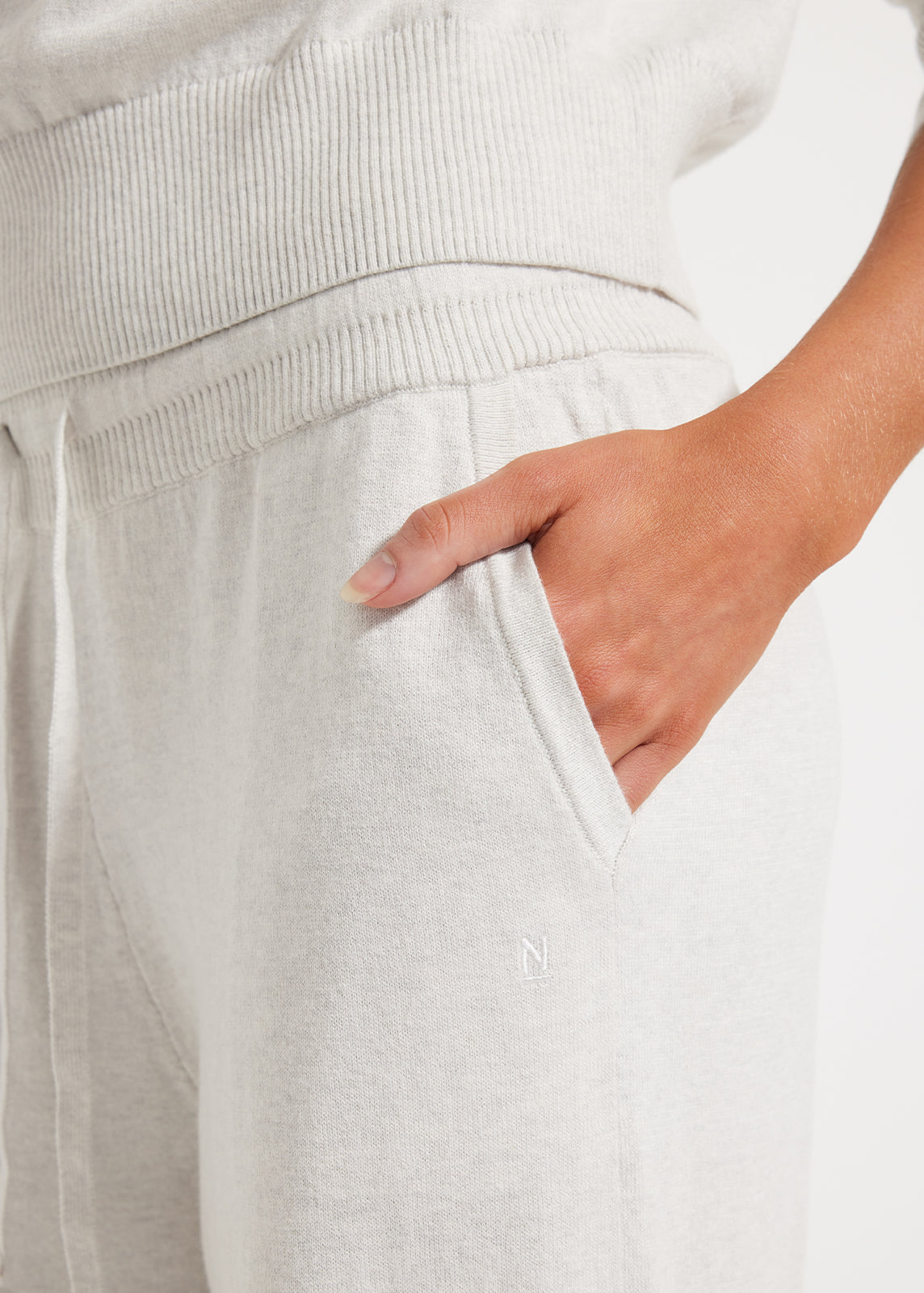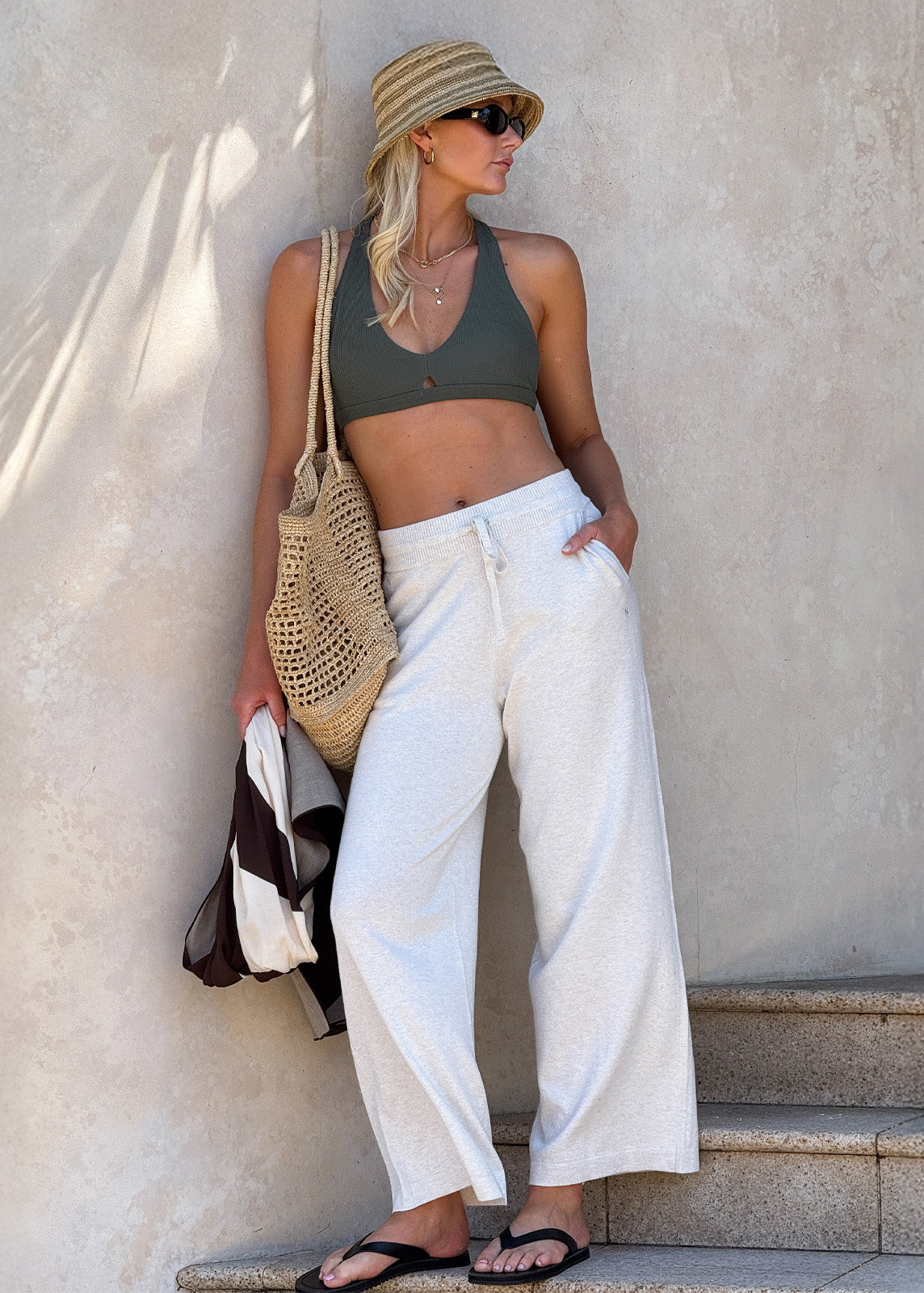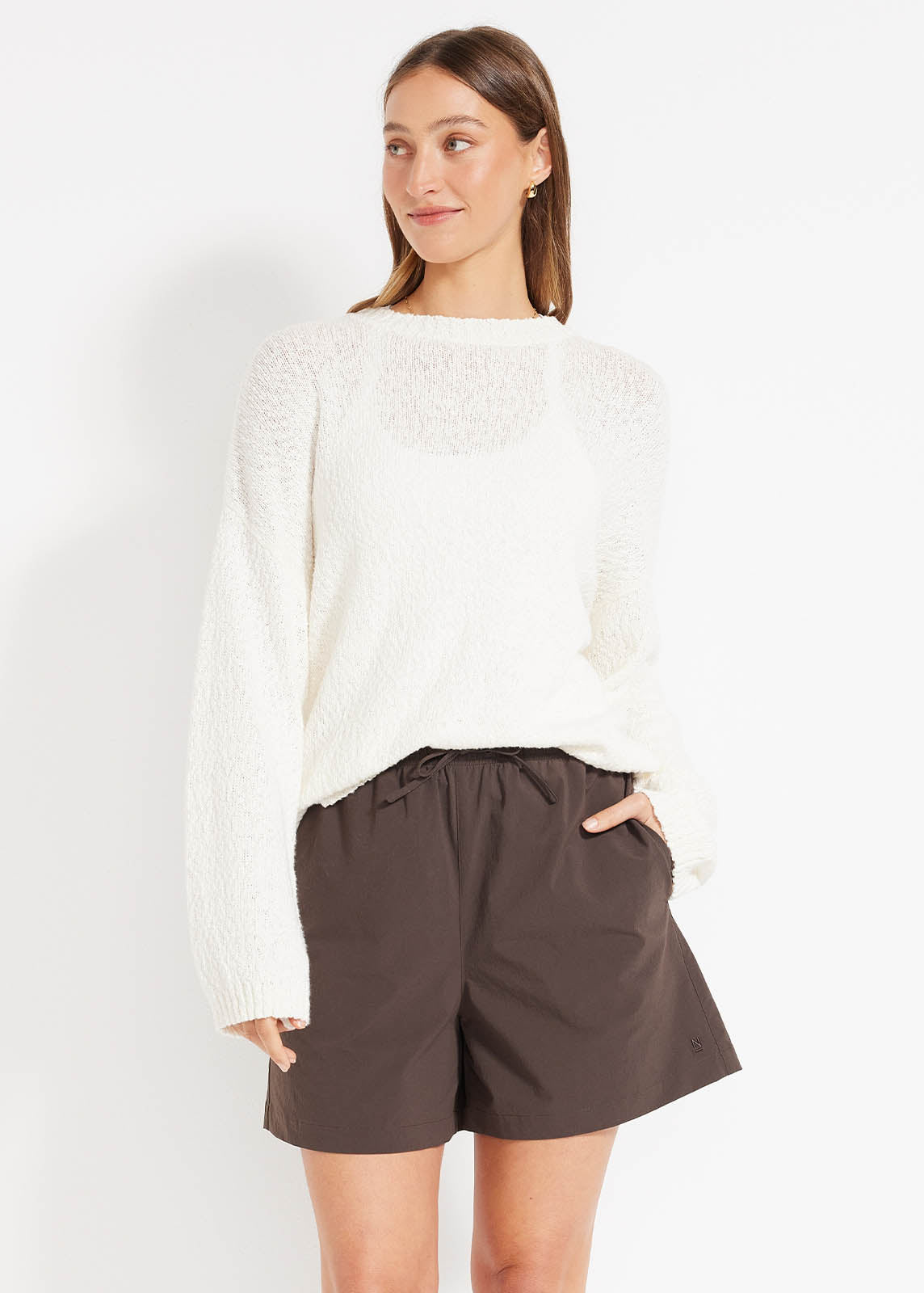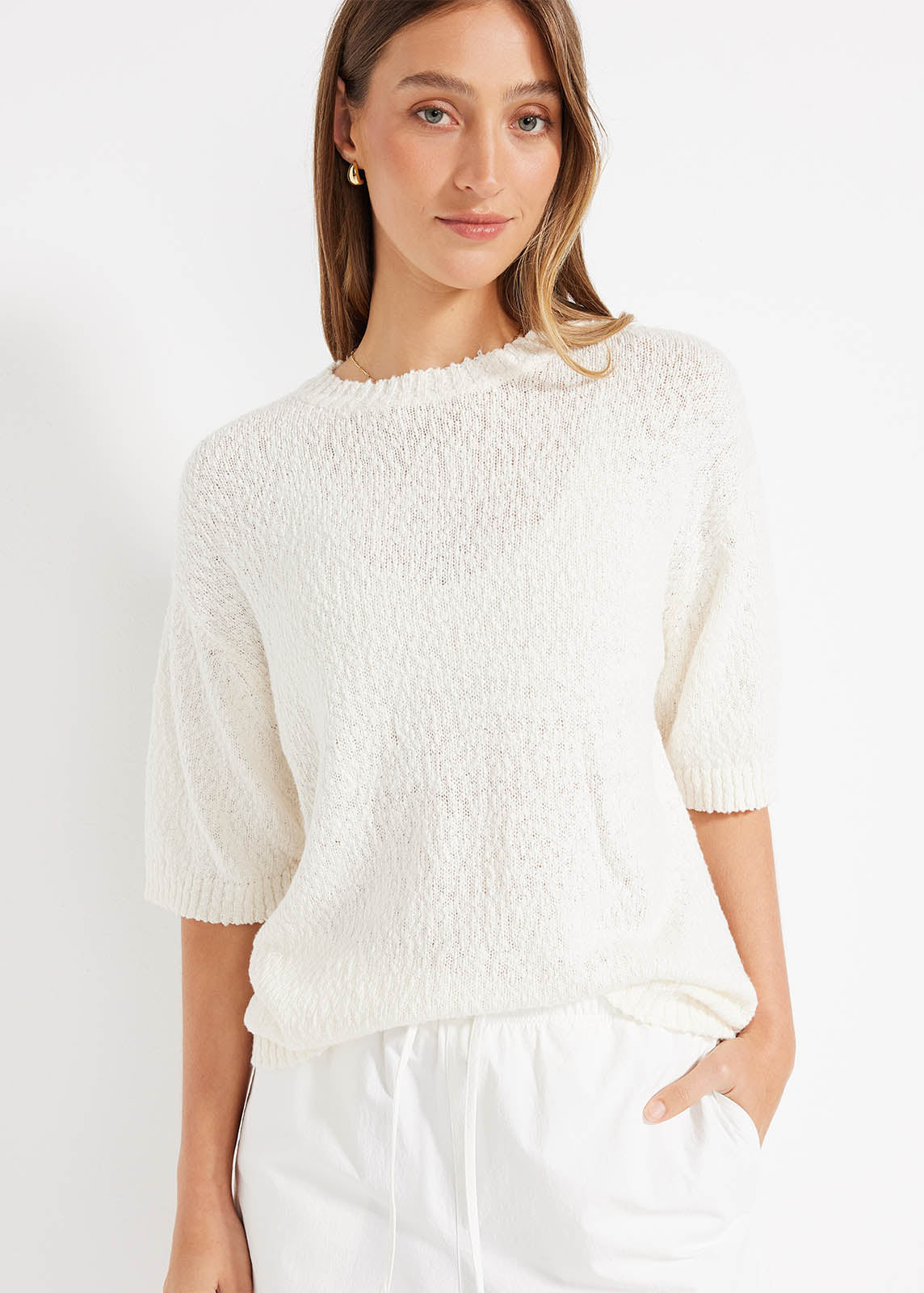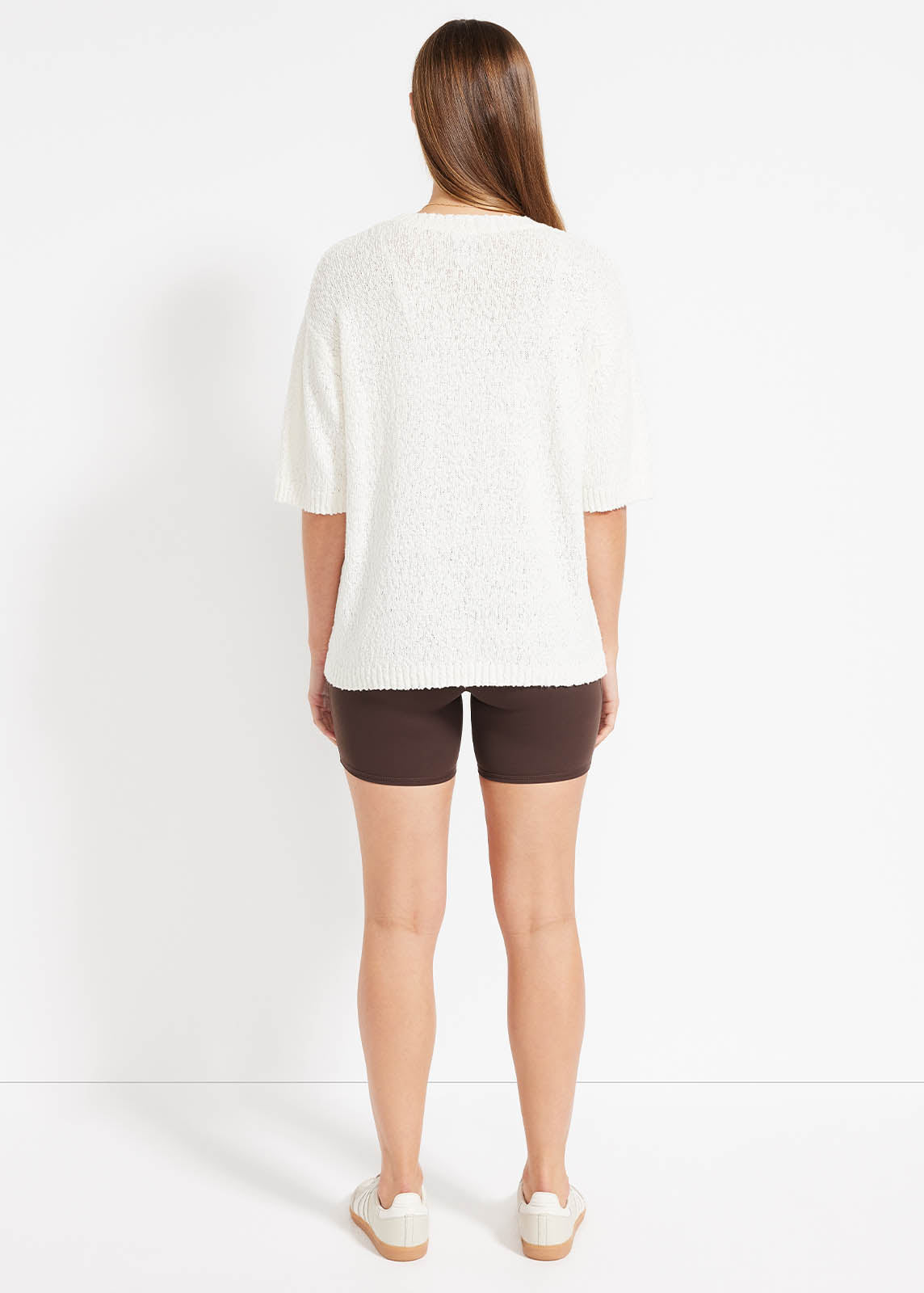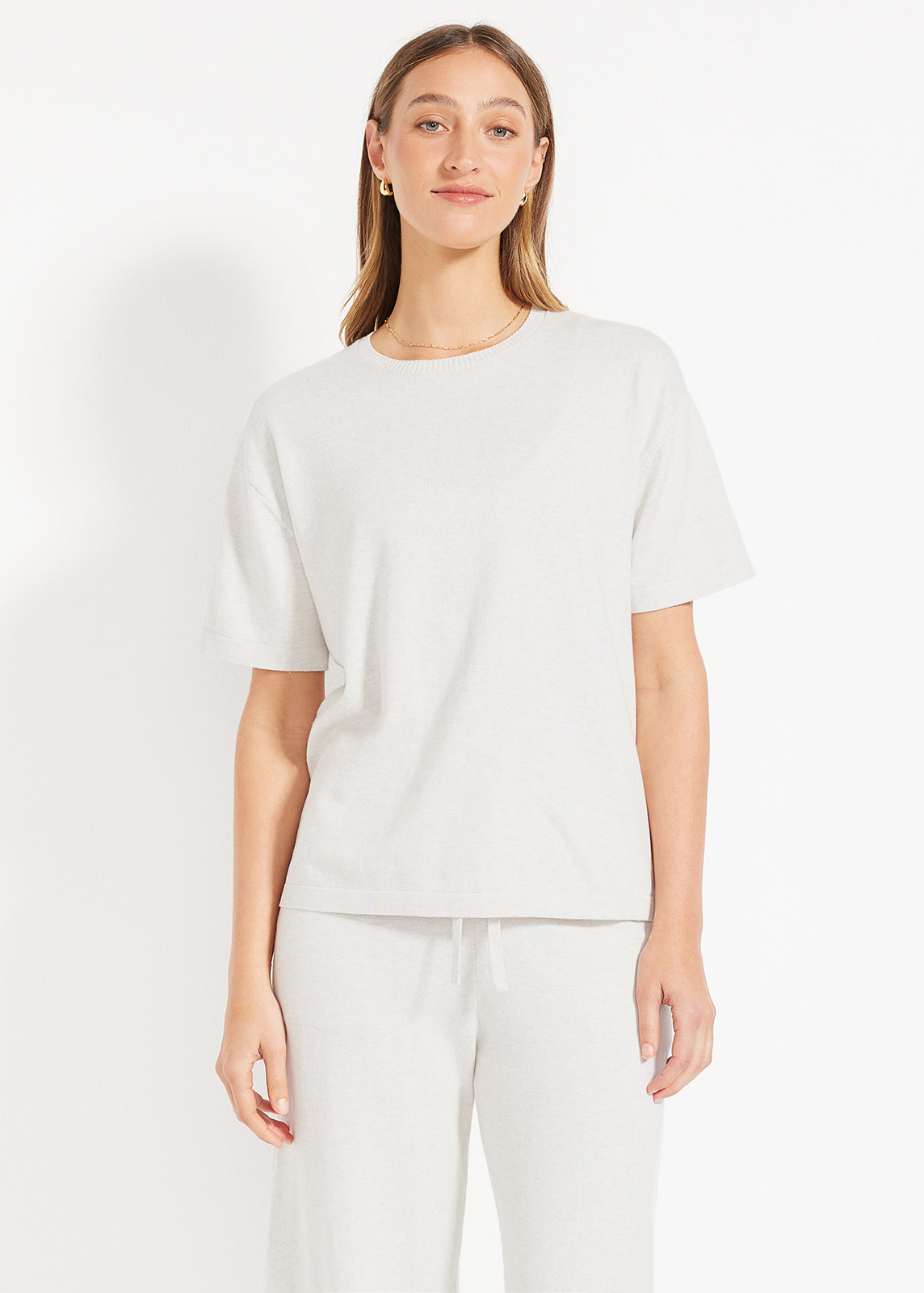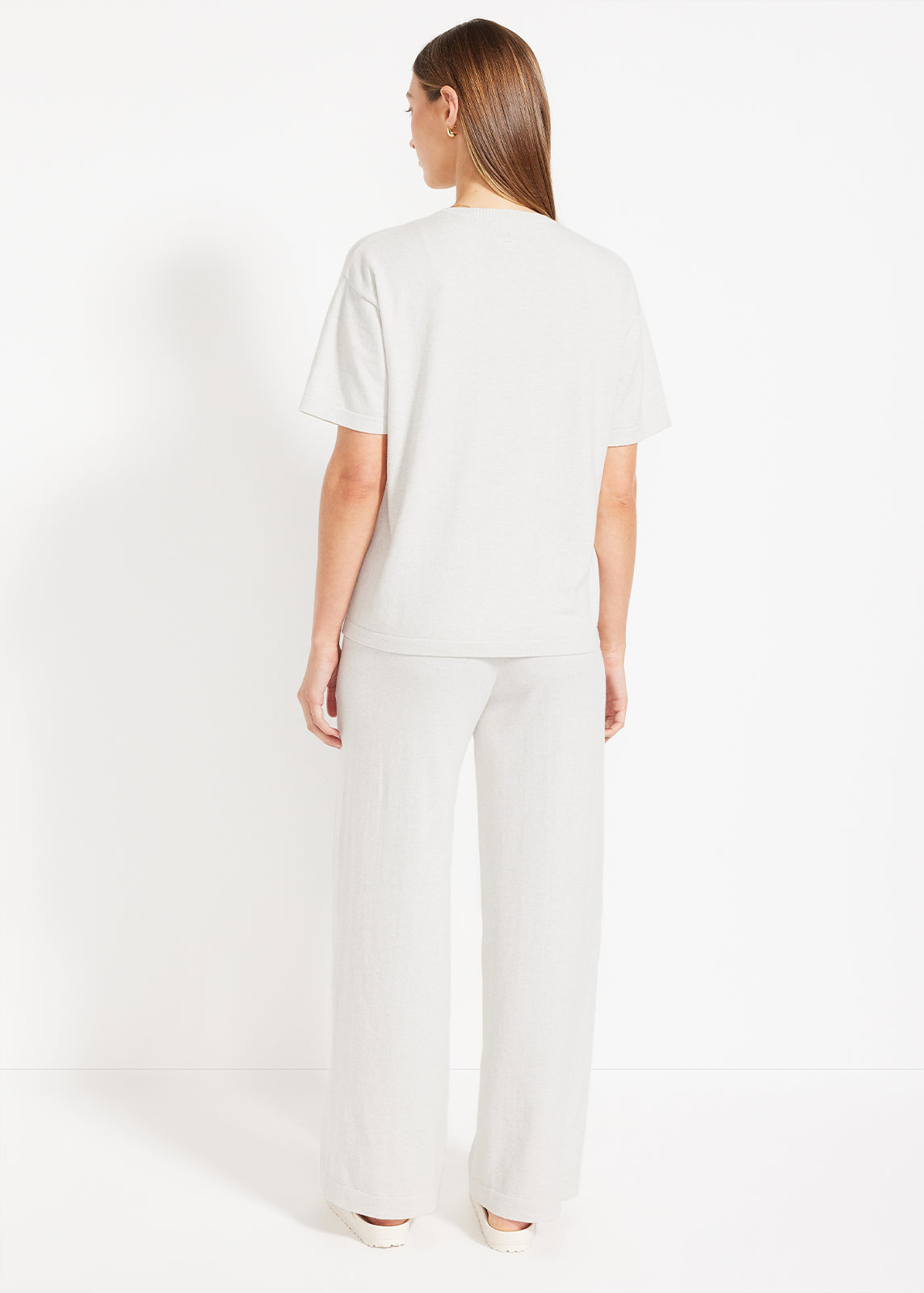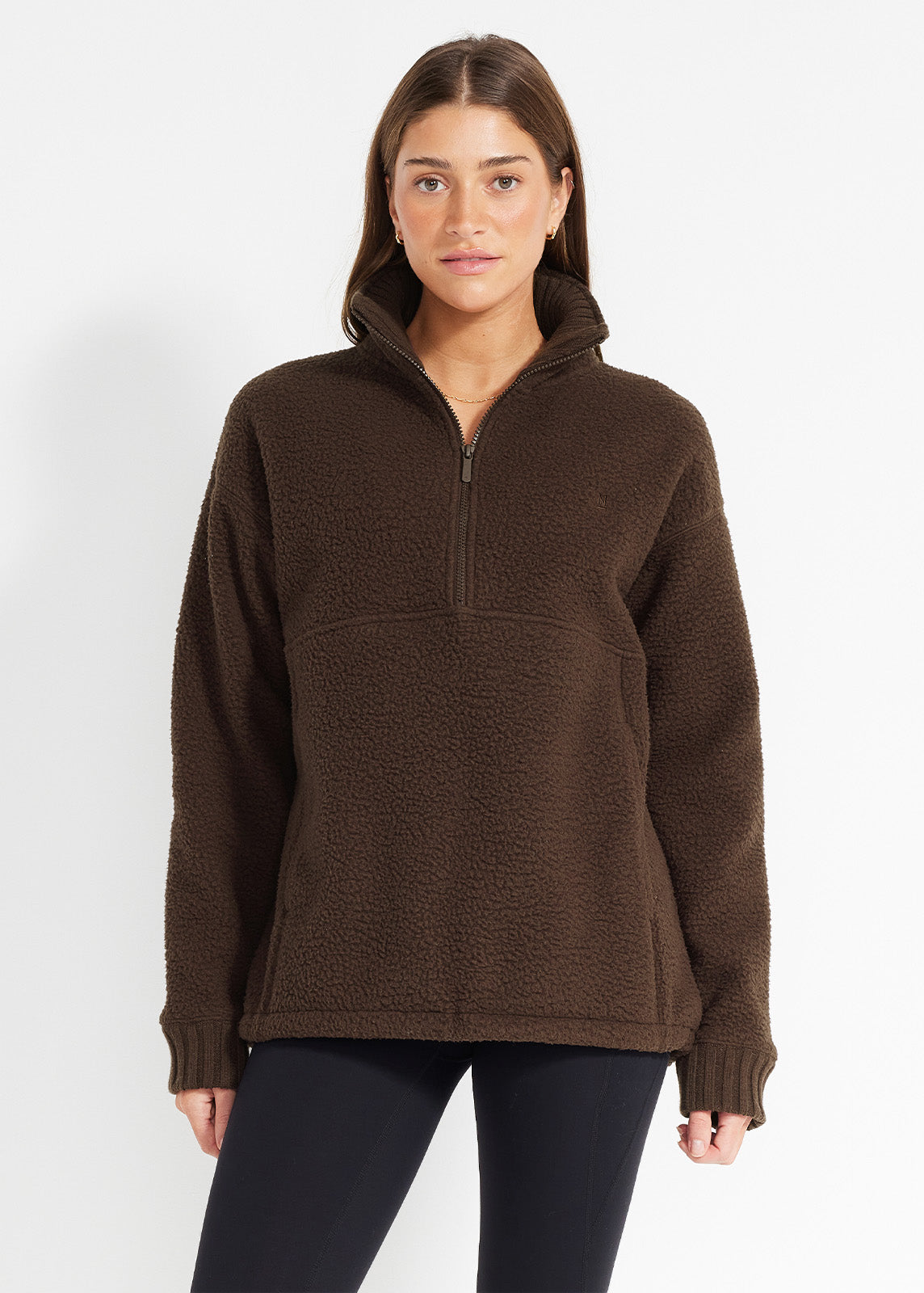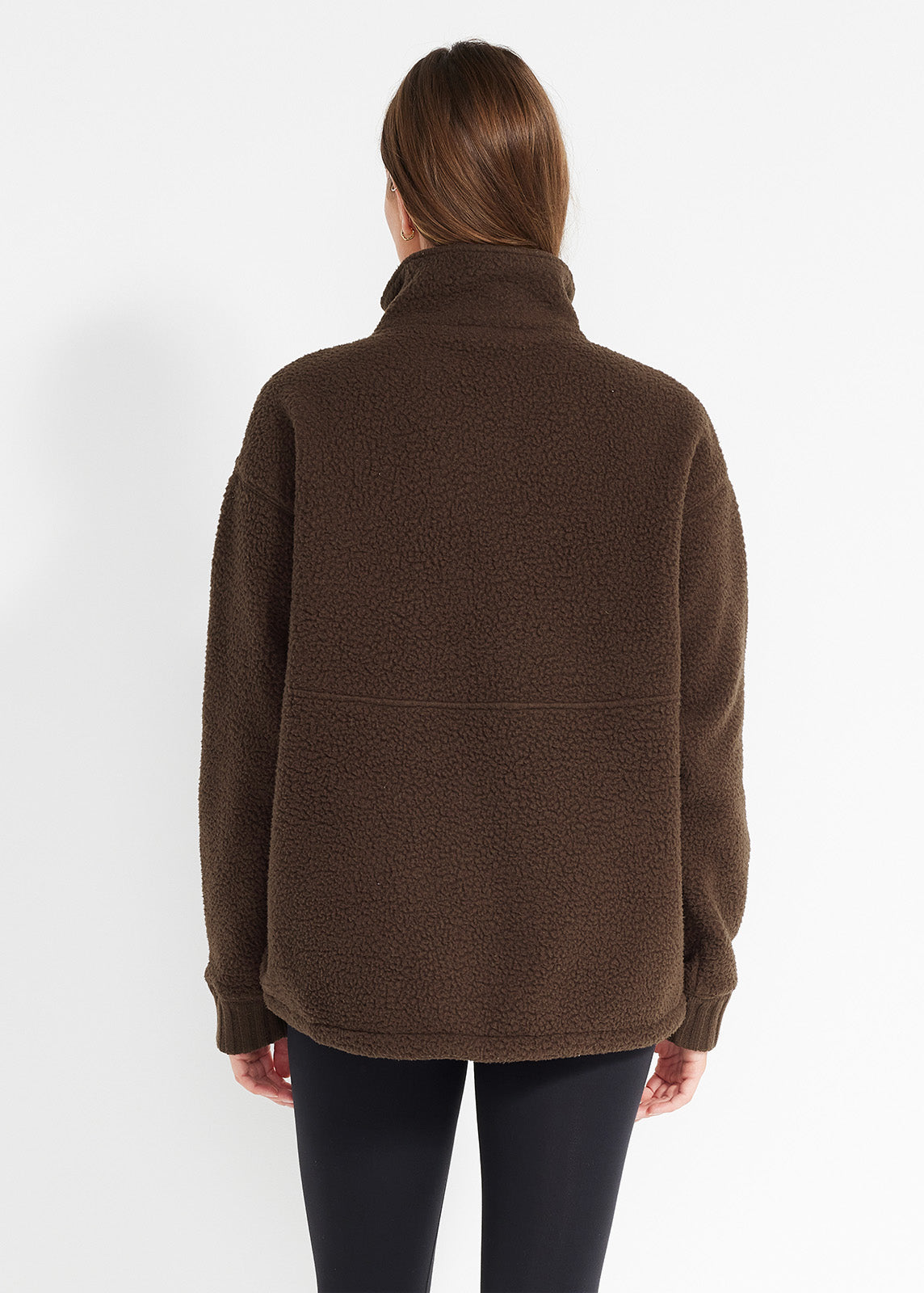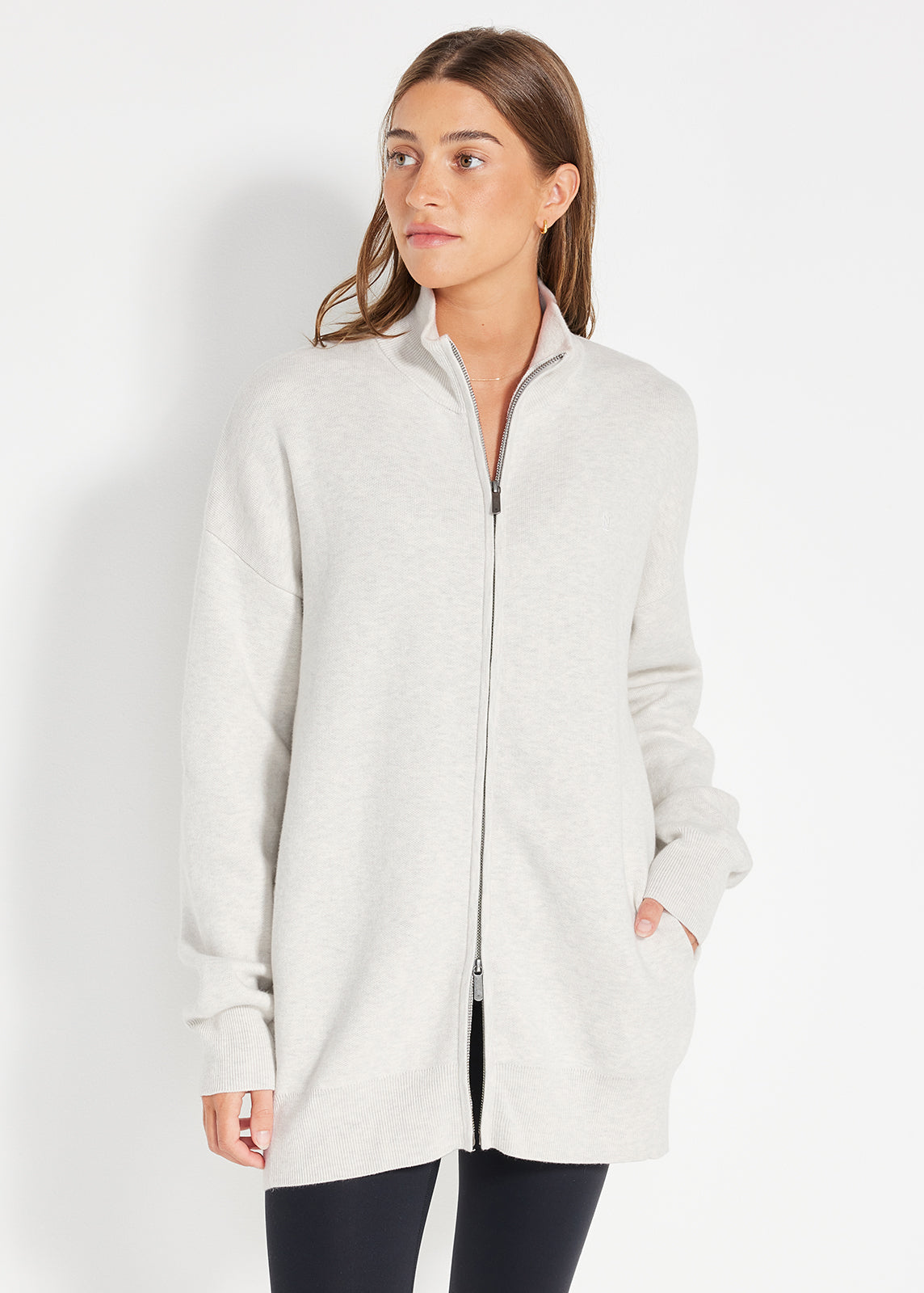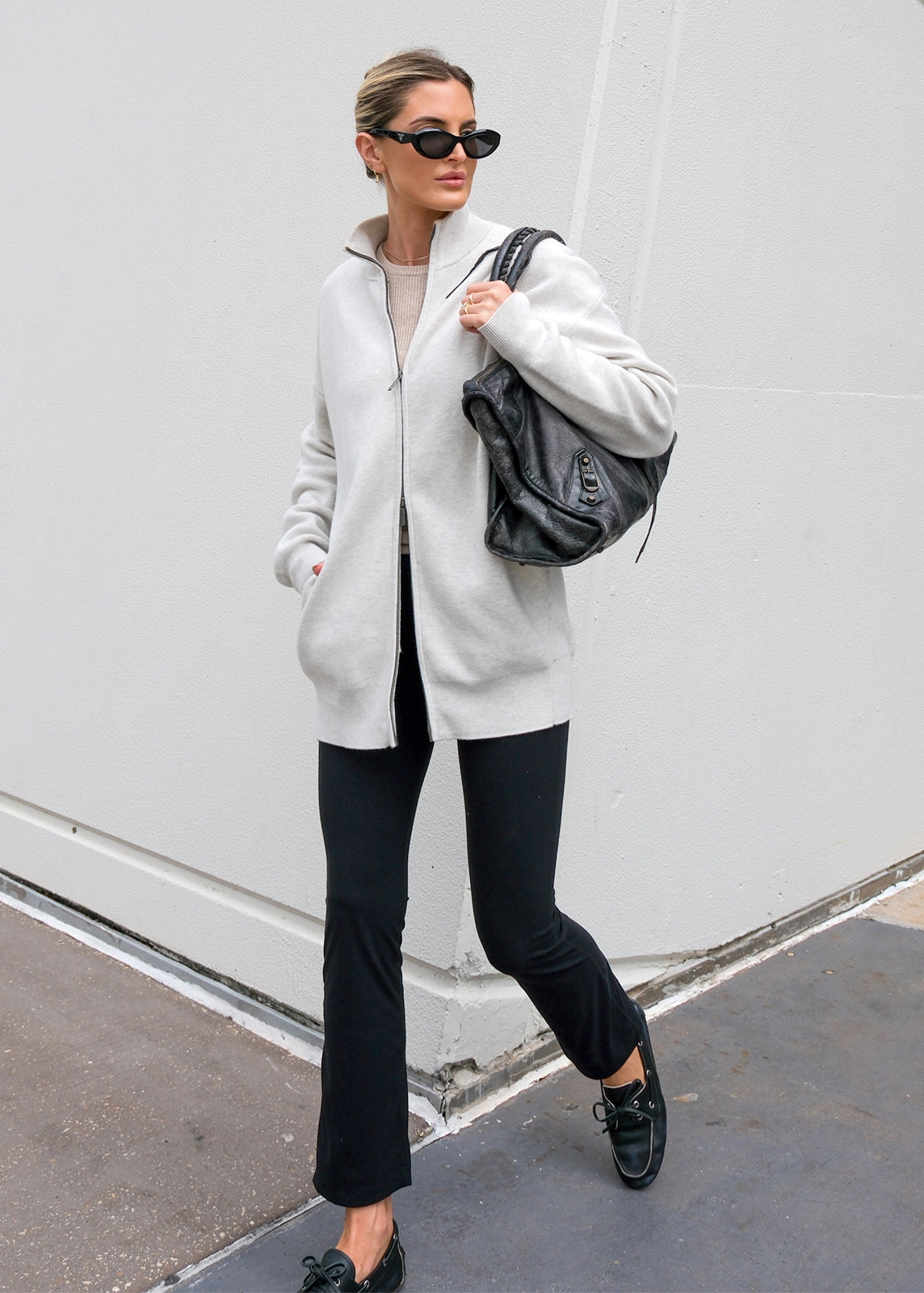The following guide is everything you need to know about caring for your Nimble knitwear.
Tip 1 - Occasional Washing
Our knits are constructed and blended to be breathable, so washing them after every wear is unnecessary. In fact, frequent washing may affect the fabric, resulting in increased pilling and reducing the soft cosy hand-feel. If your knits are still smelling great and looking fresh, you might be able to get more wear before your wash.
Tip 2 - Air Dry
To keep your knitwear fresh in between wears and seasonal washing, simply let them air out, either by laying them flat on a chair overnight and/or giving them a gentle shake from time to time. If your knitwear picks up smells or odours throughout the day (e.g. from perfume or cooking), you can let it air-dry outside, away from direct sunlight. If you’re giving your knits time to freshen up and breathe, the recommended rest time is between wears is about 24 hours.
Tip 3 - Avoid Friction
To help prevent your knitwear pilling, limit friction where possible. This includes avoiding bags and belts that rub against your knitwear. Pilling is a natural characteristic of knitwear, and can add personality to a garment. It shows the sweater has been well-loved. It is not a fault, and if it does occur, we recommend embracing it. However, if you'd like to remove the excess surface wear, you can use a de-pilling device. De-pilling combs are best used as they are more delicate on the fabric, however fabric shavers can also be used.
Washing Guide
1. Before You Choose Your Washing Method
Ensure you use a delicate detergent, as harsh washing detergents will wear away the softness of the knits. Don't use a top-loader washing machine with an agitator. It’s a rougher wash. Avoid spin cycles- but not Spin class ;).
Knits get heavy when wet, so be cautious and avoid damage with gentle options. High spin cycles can also result in faster pilling, occurring when the fibres rub together quickly. If you’re not wearing your knitwear on hot days or during sweaty activities, only wash when necessary.
2. Choose Your Washing Method
For Machine Wash: Turn your knitwear inside out and place it in a delicates bag or a guppy bag before popping in your washing machine. Add your washing detergent (wool friendly or delicate detergent) into the wash. Be gentle now, you should only wash this on a cold/delicate cycle. If your garment has a zipper, make sure to close the zip before washing to avoid snagging.
For Hand Wash: Bath time! Fill up a small sink with cold water (brrr!). Add a teaspoon of delicate detergent. Enter the splash zone: submerge your knitwear into the water and use gentle movements to wash it section by section. Be careful not to agitate too much, it doesn’t need to be scrubbed. Rinse not wring! Rinse out the knitwear in clean water to ensure all detergent is removed. Lightly squeeze to remove excess water or even lay the knits out on a dry towel to help remove the moisture.
3. Air Dry & Store Away
After washing, either lay it flat on a dry towel or lay it over multiple strings of a clothesline to air dry inside out – ensure it is done in a well-ventilated area. Knitwear should also be dried flat, to avoid any stretching occurring. When the knit is completely dry, hang it to air out for an additional couple of hours before wearing or storing.
To keep this baby safe and in tip top condition, we recommend storing it in a drawer or cupboard. By keeping your knits in a cool, dark place away from direct light, you will be able to keep them looking great for years to come. Just remember to fold them neatly and avoid overcrowding the drawer. Hanging your knitwear should be avoided, as it causes stretching, particularly at the shoulders. It’s best to fold and store them in a drawer instead. However, if you need to hang your knitwear, do so carefully. Stick to only hanging your lightest weight knits and be sure to use high-quality wooden hangers. Alternatively, fold your knitwear in half and hang them over the hanger.









